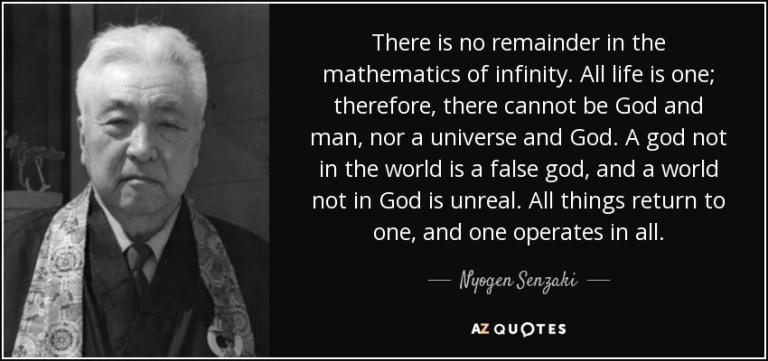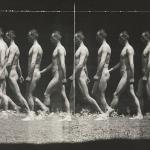Nyogen Senzaki died on the 7th of May, 1958, in Los Angeles, California.
He was a central figure introducing Zen to North America.
Not much is known about Senzaki’s early years. He was born sometime in the late nineteenth century in Siberia. His mother was Japanese, his father either Chinese or Russian. Orphaned early on, he was taken in by a Japanese priest and adopted by a shipwright named Senzaki.
He was later taken under wing by a Soto priest who provided him with an education and, it appears, ordained him an unsui. In later years he would speak of himself as a “mushroom”—having no deep root, no branches, no flowers, and “probably no seeds.”
In 1896 he went to Engakuji and became Soyen Shaku’s student. This crossing over of sect, which is fairly unusual today, was at that time virtually unheard of. In those days just to transfer from one teacher to another in the same school led some to cut off a finger as a sign of regret.
He studied with Soyen Shaku for five years, after which he left the monastery to found a nursery school, inspired by the German innovation of kindergartens. Determining to live simply as a celibate, he tried hard to live as a monk rather than follow the increasingly normative priestly model of Japanese temple life.
When Soyen Shaku Roshi made his second visit to America in 1905, he was accompanied by the young Nyogen Senzaki. It seems he first came to America with the idea of raising funds for his nursery school. But he ended up staying on, first as a houseboy at the home of Alexander and Ida Russell, early supporters of Soen Roshi—Ida being possibly the first Westerner to formally practice koan introspection.
He later continued doing domestic work for others and, for a while, taught Enghsh andJapanese. He then began working in hotels, first as a porter andeventually making his way up to manager. He briefly ownedahotel, but when that failed, he became a cook.
In 1922, Nyogen Senzaki hired a hall and gave his first lecture on Zen. This was the beginning of his “floating Zendo,” which he recreated wherever he could hire a hall or cajole a friend or acquaintance into letting him use her or his living room. He led the itinerant group that gathered around him in various places from San Francisco to Los Angeles for the next thirty years—excepting only the war years following 1942, when he was interned with 10,000 other Japanese nationals at Heart Mountain in the Wyoming desert.
Many Californians and others had their first taste of Zen practice and thought under Senzaki Sensei’s tutelage. This number included the young Robert Aitken, who would go on to be one of the most respected Zen teachers in the West. A close friend of the great Soen Nakagawa, Senzaki also became a mentor to Eido Shimano, who would go on to become master of the Zen Studies Society in New York City and Dai Bosatsu Zendo in upstate New York.
As I noted at the beginning Nyogen Senzaki died in 1958. Knowing that he was dying, he recorded a message to be played at his funeral. In it he said: “Friends in Dhamma, be satisfied with your own heads. Do not put any false heads above your own. Then minute after minute, watch your steps closely. Always keep your head cold and your feet warm. These are my last words to you.”
But in fact they weren’t.
He then added:”Thank you very much, everybody, for taking such good care of me for so long. Bye-bye.”
Aitken Roshi, who was there, says that at the tail end of the tape the last thing one could hear was a small laugh.
In one sense Nyogen Senzaki was a mushroom: he left no Dharma heirs. (Well, there are some who say they were. As he had no formal authorization himself and there are no written records that I’m aware of where he says he gave his authorization to others, it’s all a bit cloudy…)
Thanks to his early books on Zen, and all those halls he hired, and his floating Zendo—much of Zen on the West coast of North America got its start.
So, incense, candles, and many bows for this wonderful teacher.
(This essay is largely adapted from my chapter on Senzaki Sensei in Zen Master Who: A Guide to the People and Stories of Zen.)















